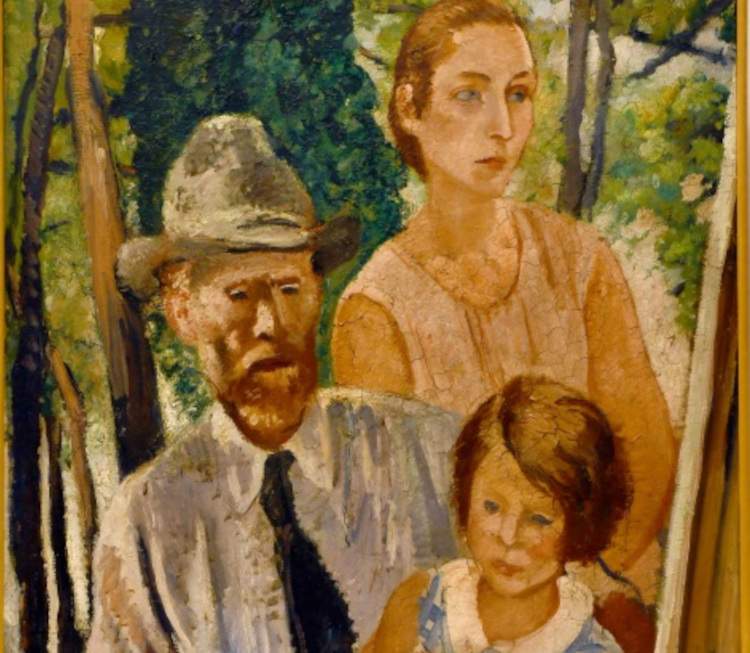An exhibition in Rome on the role of contemporary man in society
Until November 14, 2021, the Galleria d’Arte Moderna in Rome presents the exhibition Ciao maschio. Face, Power and Identity of Contemporary Man, curated by Arianna Angelelli and Claudio Crescentini. On display are more than one hundred works, including paintings, sculptures, graphics, photography, art and experimental films, videos, video-performances and installations, many of which have never been exhibited before or have not been exhibited for a long time, coming in part from the Capitoline contemporary art collections (Galleria d’Arte Moderna, Museo di Roma a Palazzo Braschi, MACRO Superintendence contemporary art collection, CRDAV Centro Ricerca e Documentazione Arti Visive), as well as from MAXXI, the Centro per l’Contemporary Art Luigi Pecci of Prato, UniCredit SpA, Foundations and artists’ archives, and other public and private institutions, with the aim of describing the evolution of the representation and role of contemporary man in society and recounting the influence these changes have had on the arts, especially from the second half of the 1960s to the present.
The exhibition is developed by themes, which outline through art the male face, power and identity in their social and political becoming, from the late nineteenth century to the present. The title refers to Marco Ferreri ’s 1978 film, winner of the Special Grand Prix of the Jury at the 31st Cannes Film Festival, in a kind of homage to the Italian director.
The exhibition starts with a site-specific urban installation by street artist Pax Paloscia entitled Contemporary Gods, made on one of the main themes of his iconographic research, male adolescence understood as a phase of passage and transition, characterized by intense psychophysical and physical changes. Painted canvases and photographs meet and collide with female physicality, represented by Marino Marini’s sculpture Bagnante (1934).
An entire room is occupied by an installation of works, The Face of Power: a tracking shot of male faces and bodies on power. A focus is devoted to The Face of Terror, with official portraits of three dictators (Hitler, Mussolini, Stalin), emblematic symbols of twentieth-century terror and violence against peoples. Another section is devoted toMale Identity, starting with the millennial culture that has often affected education and that art has represented with works on war and man’s violence on man, the family understood in its different forms and possibilities, and the theme of beauty and self-awareness. One section is devoted to Cult of the Body and the Ethics of Sport. And in the section Men seen by women, the look at contemporary man is fulfilled through the lens of female photographers and the gaze of Italian women artists of the second half of the 20th century.
The exhibition concludes with another urban installation, Till Death Tears Us Apart (2017), by Mark Jenkins, created in collaboration with Wunderkammern Gallery. Dramatic and destabilizing, the exhibition is also immersive and surreal in its hyper-realistic structure, especially as it is placed in a museum space, outside of a classic everyday venue.
Also on view is a review of art films entitled Un super-male, produced with the Centro Sperimentale di Cinematografia - Cineteca Nazionale, in collaboration with the CSC - Archivio Nazionale Cinema Impresa, curated by Annamaria Licciardello (Cineteca Nazionale), and dedicated to Italian experimental cinema of the 1960s-1970s, through which the male filmic “super-ego” of this period is investigated.
The artists involved are, among others, Claudio Abate, Valerio Adami, Giacomo Balla, Gianfranco Baruchello, Felice Carena, Lisetta Carmi, Elisabetta Catalano, Gino De Dominicis, Giorgio de Chirico, Agnese De Donato, Willem De Kooning, Guerrila Girls, Alberto Grifi, Renato Guttuso, Mark Jenkins, Carlo Levi, Sergio Lombardo, Urs Luthi, Renato Mambor, Ugo Nespolo, Luigi Ontani, Pax Paloscia, Pino Pascali, Giuseppe Penone, Anders Petersen, Fausto Pirandello, Michelangelo Pistoletto, Gerhard Richter, Giulio Aristide Sartorio, Mario Schifano, Gino Severini, Francesco Vezzoli, Andy Warhol.
The exhibition is sponsored by Roma Culture and Sovrintendenza Capitolina ai Beni Culturali, in collaboration with Centro Sperimentale di Cinematografia - Cineteca Nazionale.
For info: galleriaartemodernaroma.it
Hours: Tuesday through Sunday from 10 a.m. to 6:30 p.m. Closed Mondays.
Image: Felice Carena,La pergola, detail (1929; Rome, Galleria d’Arte Moderna)
 |
| An exhibition in Rome on the role of contemporary man in society |
Warning: the translation into English of the original Italian article was created using automatic tools. We undertake to review all articles, but we do not guarantee the total absence of inaccuracies in the translation due to the program. You can find the original by clicking on the ITA button. If you find any mistake,please contact us.




























